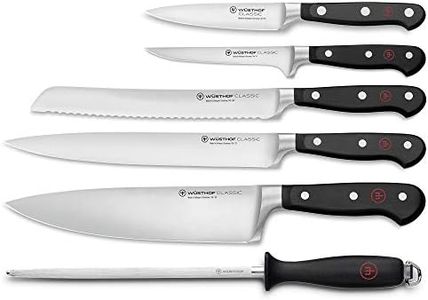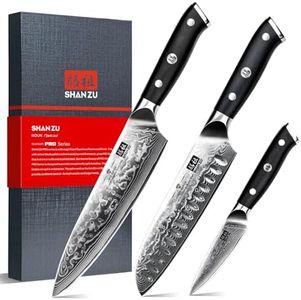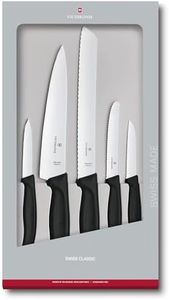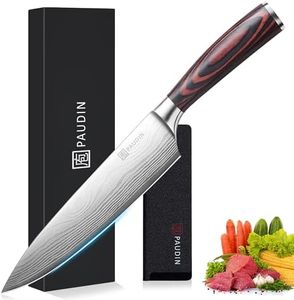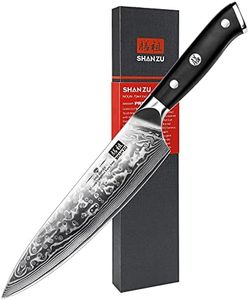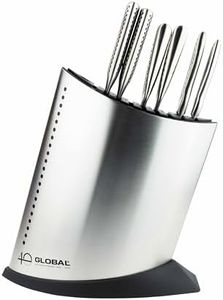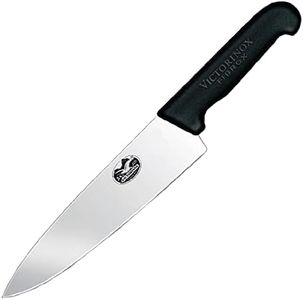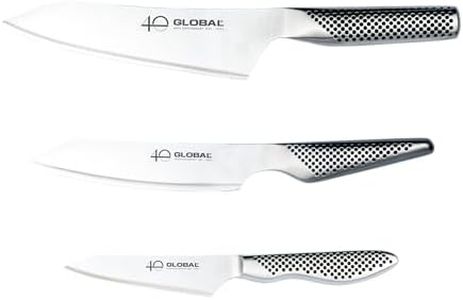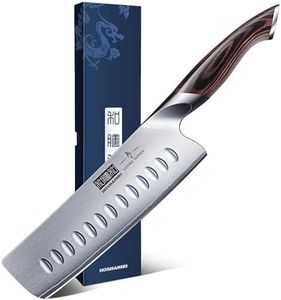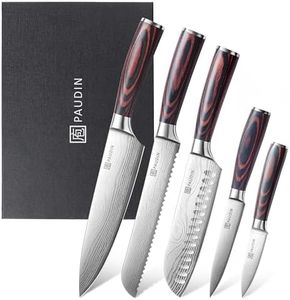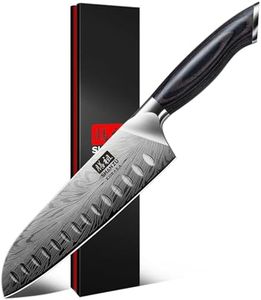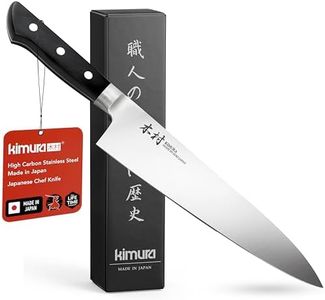We Use CookiesWe use cookies to enhance the security, performance,
functionality and for analytical and promotional activities. By continuing to browse this site you
are agreeing to our privacy policy
10 Best Chef Knifes
From leading brands and best sellers available on the web.Buying Guide for the Best Chef Knifes
Choosing the right chef knife is crucial for any cooking enthusiast or professional chef. A good chef knife can make food preparation easier, faster, and more enjoyable. When selecting a chef knife, consider the following key specifications to ensure you find the best fit for your needs.Blade MaterialThe blade material of a chef knife affects its durability, sharpness, and ease of maintenance. Common materials include stainless steel, carbon steel, and ceramic. Stainless steel is resistant to rust and easy to maintain, making it a popular choice for home cooks. Carbon steel is known for its sharpness and edge retention but requires more care to prevent rust. Ceramic blades are extremely sharp and lightweight but can be brittle. Choose a blade material based on your preference for maintenance and sharpness.
Blade LengthBlade length typically ranges from 6 to 12 inches. A longer blade (8-12 inches) is ideal for cutting larger items and offers more versatility, while a shorter blade (6-8 inches) provides better control and is easier to handle for smaller tasks. Consider the types of food you frequently prepare and your comfort level with handling different blade lengths to determine the best option for you.
Handle MaterialThe handle material impacts the comfort and grip of the knife. Common handle materials include wood, plastic, and composite. Wooden handles offer a traditional feel and good grip but require more maintenance. Plastic handles are durable and easy to clean but may not provide the same level of comfort. Composite handles combine the benefits of both wood and plastic, offering durability and a comfortable grip. Choose a handle material that feels comfortable in your hand and suits your maintenance preferences.
Weight and BalanceThe weight and balance of a chef knife affect how it feels during use. A heavier knife can provide more power for cutting through tough ingredients, while a lighter knife offers better control and reduces fatigue. Balance refers to how evenly the weight is distributed between the blade and handle. A well-balanced knife feels comfortable and stable in your hand. Consider your strength and comfort level to choose a knife with the right weight and balance for you.
Edge TypeThe edge type of a chef knife determines its cutting performance. Common edge types include straight, serrated, and granton. A straight edge is versatile and suitable for most tasks, providing clean cuts. Serrated edges are ideal for cutting through tough or crusty surfaces, like bread. Granton edges have hollowed-out grooves that reduce friction and prevent food from sticking to the blade. Choose an edge type based on the types of food you frequently prepare and your cutting preferences.
